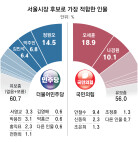Transcriptions of declaration played major role in March 1st Movement
Transcriptions of declaration played major role in March 1st Movement
Posted March. 10, 2020 07:42,
Updated March. 10, 2020 07:42

During the March 1st Movement in 1919, some 21,000 copies of the declaration of independence were pressed at Boseongsa. It makes one wonder how they met the immense demand from the floods of independence protests staged nationwide.
“Protesters from different local communities across the country received the declaration of independence, and they transcribed and distributed them to spread the rally further,” said Kim Do-hyung, a researcher at the Independence Hall of Korea. “It was the transcribed copies of declaration that made the biggest contribution to spreading of the independence movement.
“Reflecting the global trend and pursuant to the principles of justice and humanity as well as self-determination, we declare the independence of Joseon in the expression of our utmost determination and final sincerity.” So reads the first sentence of the declaration of independence used in the rally in Songjin County, North Hamgyong Province. It summarizes the essence of the original declaration of independence from several paragraphs.
According to Kim, many of the transcribed versions including the one from Hadong, South Gyeongsang Province, were a summary written on a single sheet of paper. The purpose was to simplify the writing so that it can be read and initiate the protest as quickly as possible. In fact, the original declaration of independence drafted by Choi Nam-seon, a Korean historian, included too many Chinese characters, making it less legible for the masses. The smaller size of paper for transcribed versions was another reason for summarization.
Jong-Yeob JO jjj@donga.com







